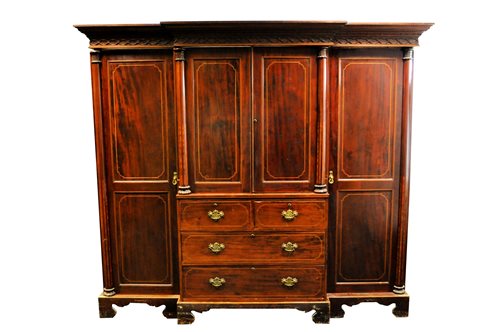Antiques are green
Here is a question for you. If I found you an object which would out last you, your children, your children’s children and their children, need minimal upkeep, not contribute to the ‘carbon footprint’ and not be a drain on the earth’s finite resources, and be extremely useful to you all of the time, would you buy it?
14/02/2020
Here is a question for you. If I found you an object which would out last you, your children, your children’s children and their children, need minimal upkeep, not contribute to the ‘carbon footprint’ and not be a drain on the earth’s finite resources, and be extremely useful to you all of the time, would you buy it? Here is another question for you. Given the above proposal, would you instead buy an object which often falls apart after a few years, would have to be replaced, could not be passed on to your relatives or friends, drained the earth’s finite resources and contributed to the ‘carbon footprint’, would you buy that instead?
These two questions are at the heart of the antique furniture debate today. The answer to the first question, providing longevity and sustainability is ‘antique furniture’. The answer to the second is the particle board retail furniture which we are all happy to buy instead. On so many subjects the general public is well educated and critical. Fox hunting, ivory, the great plastic debate, single use items, electric vehicles, cleaner air, gender politics-all these issues are aired on a daily basis and we all sit up and listen. But why not antique furniture?
Sold - £50 (+bp)
The next target, I would suggest, for Hugh Fearnley-Whittingstall’s eagle eye, should be the furniture market and its sustainability in its present form. It should also be about the antique furniture market and its ‘green’ credentials. In the antiques world we have been ‘banging the drum’ on the sustainability of antique furniture for some time now. Despite the media mantra about ‘brown furniture’ being out of fashion, the opposite should be true. Today, it is cheap compared to retail equivalents, it is hard wearing (that is why it is antique!) and it is sustainable.
Sold - £110 (+bp)
For too long now the antique furniture market has been becalmed financially and there needs to be a change. The next generation of people still need furniture and will still live in houses. It might be prudent, however, for them to keep that furniture for a lifetime and then pass it on to the next generation. If history is kept and handed on it also takes care of the human element of the transaction. ‘Granny’s dresser’, ‘great uncle George’s grandfather clock’, ‘Aunty Peggy’s nursing chair’ – all these stories knit the generations together, they breathe the life of a family across lifetimes. Are we happy to ‘junk’ all that history and let the high street take care of our memories every three years?

Sold - £320 (+bp)
Next time you think about changing a piece of furniture, consider buying a piece that you can live with for a lifetime and pass on to your loved ones for more lifetimes. Antiques are time machines and the sentiment that goes with them unlocks them, binds families and memories, solid reminders of times past, sustainable guardians in the home treading lightly upon the earth, killing nothing, upsetting no one.
For more information, contact Gerry Berwyn-Jones
Head of Fine Art
Email: gerry@hallsgb.com
Phone: 01743 450 700
.